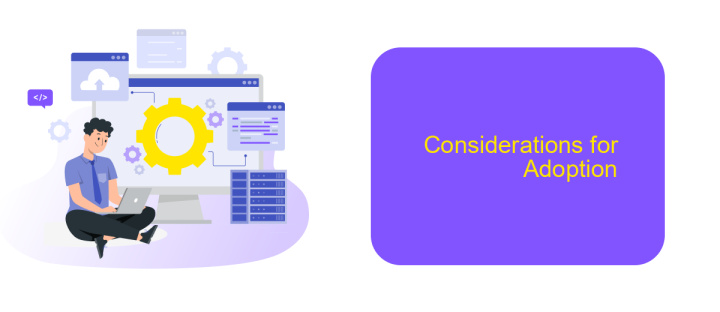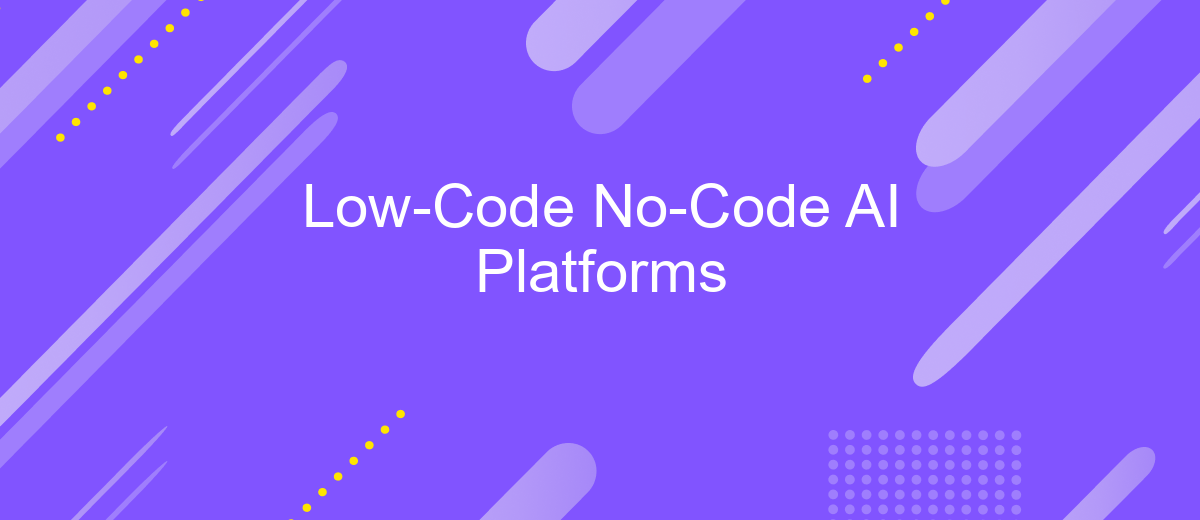Low-Code No-Code AI Platforms
Low-Code No-Code AI platforms are revolutionizing the way businesses approach software development and artificial intelligence. By enabling users with little to no coding experience to create sophisticated applications and AI models, these platforms democratize technology and accelerate innovation. This article explores the key features, benefits, and potential challenges of adopting Low-Code No-Code AI solutions in various industries.
Introduction
In recent years, Low-Code No-Code AI platforms have revolutionized the way businesses and developers approach software development. These platforms enable users to create and deploy applications with minimal coding knowledge, making technology more accessible to a broader audience. By leveraging intuitive interfaces and pre-built templates, individuals and teams can quickly bring their ideas to life, enhancing productivity and innovation.
- Accelerated development processes
- Reduced need for extensive coding skills
- Enhanced collaboration between technical and non-technical teams
- Cost-effective solutions for small and medium enterprises
One notable example of such a platform is ApiX-Drive, which simplifies the integration of various services and applications. By providing a user-friendly interface and a wide range of pre-configured connectors, ApiX-Drive allows businesses to automate workflows and streamline operations effortlessly. As a result, Low-Code No-Code AI platforms are empowering a new generation of developers and entrepreneurs to transform their visions into reality without the traditional barriers of complex coding.
Platforms and Features

Low-Code No-Code AI platforms are revolutionizing the way businesses develop and deploy AI solutions. These platforms offer a variety of features, such as drag-and-drop interfaces, pre-built templates, and automated workflows, which enable users to create sophisticated AI models without writing a single line of code. Key players in this space include Microsoft Power Apps, Google AutoML, and IBM Watson Studio, each providing unique tools and capabilities to cater to different business needs.
One of the standout features of these platforms is their ability to seamlessly integrate with other software and services. For instance, ApiX-Drive is a notable service that facilitates easy integration between various applications, allowing for smoother data flow and enhanced automation. By leveraging such integrations, businesses can ensure that their AI models are not only robust but also versatile, capable of interacting with multiple data sources and operational systems. This holistic approach significantly reduces development time and operational costs, making AI accessible to a broader audience.
Benefits and Challenges

Low-Code No-Code AI Platforms offer significant benefits, making AI technology accessible to a broader audience. These platforms enable users without extensive technical skills to build, deploy, and manage AI models, thus democratizing AI and fostering innovation across various sectors. They also accelerate development cycles, reducing time-to-market and allowing businesses to respond swiftly to market demands.
- Ease of Use: Intuitive interfaces and drag-and-drop functionalities simplify the AI development process.
- Cost Efficiency: Reduced need for specialized developers lowers overall project costs.
- Speed: Rapid prototyping and deployment capabilities expedite project timelines.
- Integration: Platforms like ApiX-Drive facilitate seamless integration with existing systems, enhancing operational efficiency.
Despite these advantages, challenges remain. Limited customization options can restrict the complexity of AI models that can be developed. Additionally, security concerns and data privacy issues need to be addressed, especially when integrating with third-party services. Ensuring scalability and performance consistency also poses significant hurdles as the demand for AI solutions grows. Balancing these benefits and challenges is crucial for maximizing the potential of Low-Code No-Code AI Platforms.
Considerations for Adoption

Adopting Low-Code No-Code AI platforms can significantly accelerate your digital transformation, but there are several factors to consider before making the leap. Firstly, evaluate the specific needs of your business and how these platforms can address them. It's crucial to understand the limitations and capabilities of the tools you choose.
Secondly, consider the technical expertise of your team. While these platforms are designed to be user-friendly, some level of technical knowledge may still be required for optimal use. Training and support from the platform provider can be invaluable in this regard.
- Assess the scalability of the platform to ensure it can grow with your business needs.
- Evaluate the integration capabilities, particularly with existing systems and third-party services like ApiX-Drive.
- Consider the cost implications, including subscription fees, training, and potential hidden costs.
- Review the platform's security features to ensure compliance with industry standards.
Finally, it’s essential to pilot the platform with a small project before full-scale implementation. This allows you to identify any potential issues and make necessary adjustments. By carefully considering these factors, you can maximize the benefits of adopting Low-Code No-Code AI platforms.


Conclusion
The rise of Low-Code No-Code AI platforms marks a significant step forward in democratizing technology, enabling individuals and businesses to harness the power of artificial intelligence without the need for extensive programming skills. These platforms provide user-friendly interfaces and pre-built modules that streamline the development process, making it accessible to a broader audience. As a result, innovation is no longer confined to those with technical expertise but is available to anyone with a creative idea.
Moreover, the integration capabilities of these platforms, such as those offered by ApiX-Drive, further enhance their utility by allowing seamless connectivity with various services and applications. This not only simplifies the workflow but also ensures that businesses can leverage their existing tools and data more effectively. In conclusion, Low-Code No-Code AI platforms represent a transformative shift in the tech landscape, empowering users to innovate and solve problems with unprecedented ease and efficiency.
FAQ
What are Low-Code No-Code AI Platforms?
Who can benefit from using Low-Code No-Code AI Platforms?
How do Low-Code No-Code AI Platforms handle data integration?
Can I automate workflows using Low-Code No-Code AI Platforms?
What are the limitations of Low-Code No-Code AI Platforms?
Apix-Drive is a simple and efficient system connector that will help you automate routine tasks and optimize business processes. You can save time and money, direct these resources to more important purposes. Test ApiX-Drive and make sure that this tool will relieve your employees and after 5 minutes of settings your business will start working faster.

